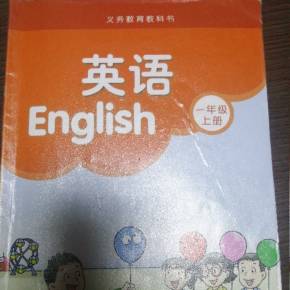拧成一股绳,搏尽一份力,狠下一条心,共圆一个梦。下面是课件范文网小编为您推荐英语高二上册教学设计:《Unit 2 Continuous learning》。

一、教材分析
本课教学内容为《英语》高中二年级第一学期(S2A)第二单元写作部分。写作体裁是一封写给报社表述观点的信件,重点落实如何用生活事例来支持观点。
1.写给报社表述观点的信件具有以下一些特点:
(1)使用正式用语,避免口语化的语句。
(2)信件内容结构清晰、简洁,即:
① 观点简明扼要;
② 至少用一个事例支撑;
③ 重申观点,不重复语言。
2.这类信件一般针对一些生活中或社会上有争议的现象、事件,难点在于如何达到有理有据地阐述,引起读者共鸣的效果。本课时将着重落实如何使用个人经历支撑一个主观点。
3.第二单元阅读部分内容为四封围绕家教中心表达观点的信件,作者均采用自己的亲身经历支撑观点,为本写作课提供了可供学习的范例和表达观点的语言支持。同时,本单元写作部分还提供了一封通过描述他人经历支撑作者观点的信件,拓宽了学生的写作思路,即可以采用自己或者好友的经历,信件的内容结构更加清晰简要。
4.课程标准高中阶段基本素材Changes and development以及呈现形式Letters在本堂课“Should parents accompany their children to school on the first day?”的表达观点类信件中得以体现。
二、学情分析
授课对象为青浦区示范性高中青浦第一中学的高二学生。
学生通过高中一年级第一学期(S1A)第三单元写作部分的学习,已经知道了信件的格式,进行了英语信件写作的训练,但信件内容主要为就拟定旅行计划而寻求帮助,还未涉及用信件表达观点的写作练习。
通过高一年级第二学期(S1B)第六单元写作部分的学习,了解到可以用事实、数字、举例或者原因支持观点,段落应由一个观点句和若干支持观点的论证句组成,练习过用两到三个包括事实、数字、原因的语句支撑观点,但仅限于短小段落,缺少用事例支撑观点的写作经验。
基于对高二年级第一学期(S2A)第二单元阅读部分的学习,学生基本掌握如何提出并阐述观点的相关语句。
在书面表达方面,大多数学生能够写出连贯的句子,但用相关度高、逻辑性强的事例支撑观点的书面表达能力上还比较薄弱。
三、教法分析
本课时是第二单元的第四课时。
第一课时: reading阅读教学。学生明确文本特征:针对家教中心这一社会现象表达观点的信件;了解如何通过描述作者亲身经历支持论据论点的写作手法;归纳如何针对既定话题表达观点、论据的文章结构。
第二课时:课文词汇教学。学生练习如何使用文本中出现的关键词语、句型表达观点、阐述论据、描述个人经历以及情感变化。
第三课时,more reading阅读词汇教学。学生了解什么是自主学习,自主学习两个范例:函授课程和网络课程的学习材料和学习方式以及自主学习的条件和收获。通过词汇学习,基本掌握了it is convenient for sb. to do, adapt ...to..., receive a real sense of achievement and satisfaction等核心短语句型的用法。
第四课时,即本课时的重点是写作教学,确定的课题为Writing: Argumentative Letters—— How to support the argument with experiences。学生通过教材中相关文本的学习和深入研读,明确观点类信件的文章结构。在新的情境(Should parents accompany their children to school on the first day?)中,观察、思考、分析如何用个人的生活经历支撑观点,获得读者的共鸣。
“写前”环节,首先是通过对课文主要内容的回顾,引出表达观点信件的主要框架,即论点、论据、结论。再通过对教材(第27页)写作练习范文的研读,将本课的写作训练聚焦于“利用生活事例说明观点”,以及引导学生关注选取相关事例支撑观点、使用亲身感受增强说服力等难点。
“写中”环节,围绕“父母是否应该陪同高一新生到校报到?”这一论点,搜集学生的生活事例,重点落实学生对该论点的立场表达和理由阐述;其中融合了相关语言知识的(旧知)复现、(新知)学习和运用。
“写后”环节,主要聚焦于本课写作训练阶段“成果”的评价和反思,学生通过对评价量表的运用,深入掌握此类技能掌握和运用的要点。
通过选取新的话题,以及交流、互助、写作、反馈、修正的过程,学生能逐渐达成学会用事例支持观点论据的学习目标。
遵循课程标准中所提到的“教学任务和真实生活任务相结合”的理念,本课内容将学生以往的真实生活体验与写作任务相结合,贴近学生和社会生活的实际,并通过写作任务引发学生面对改变与发展时,站在生活新的起点对自我成长的反思,增强自信、担当的意识。本课的教学也期待以此实现语言的语用价值,将教学与生活与学生的发展成长紧密结合,凸现语言的工具性和文化性。
写作是作者不断做出恰当选择的过程,也是作者心智成长的过程。针对写作的指导也应当关注过程性指导。本课采用元认知策略帮助学生体验写作过程:计划、监控、评估、调整,符合学生英语写作能力提升的规律,顺应了学生终身发展的需求。此外,“镶嵌”在适当环节的合作学习,也使得学生在个体性很强的写作训练中,通过互相启发、借鉴、互助,写作训练的效益更大化。
Unit 2 Writing: Argumentative Letters
—— How to support the argument with experiences
Teaching Material:
Oxford English (Shanghai Edition), S2A, Module 1, Unit 2, Writing: Argumentative letters
Teaching Objectives:
At the end of the class, students are expected to be able to
1. write an argumentative letter either for or against the topic — “ Should parents accompany their children to school on the first high school day?” in three sections: state their main argument, support their argument with at least one experience and state their conclusion;
2. describe their experiences and feelings on the first high school day with related words and phrases such as accompany sb., get settled in the dormitories, deal with all the enrollment procedures, etc.;
3. support their arguments through relevant and persuasive experiences; arouse the awareness of being independent and being grateful at a new stage of their life.
Teaching Method:
Communicative Teaching and Learning; Task-based Approach
Teaching Aids: Multimedia, a writing board and an overhead-projector
Teaching Procedures:
I. Pre-writing
Interactive Task 1: the structure of an argumentative letter
*Teacher: Remind students of three sections of an argumentative letter.
*Students: Conclude the three sections of an argumentative letter.
Purpose: to clarify the structure of an argumentative letter
Guided Questions:
1. What are the three sections of an argumentative letter?
2. How do the writers support their arguments?
Interactive Task 2: a close study of the sample writing
*Teacher: Help them learn how to support the argument with relevant and persuasive experiences.
*Students: Read the sample writing on page 27 in the textbook and identify the writer’s opinion
and his main argument.
Locate the key word(s) in his argument.
Find out how the writer supports the key word.
Find the writer’s comment on such experiences.
Purpose: to learn to support the argument persuasively
Guided Questions:
1. What is the writer’s opinion on “Tutorial Center”? And why?
2. What is the key word(s) of the writer’s argument?
3. How “busy” is John’s cousin?
4. How does John feel about such experiences?
5. What do these experiences lead John to believe?
II. While — writing
Interactive Task 3: the Beginning and Body Paragraph
*Teacher: Introduce the topic: “Should parents accompany their children on the first high school
day?”
Collect students’ arguments and feelings and then classify them into“for” and “against”
categories.
Help students practice how to link their experiences to their main arguments.
*Students: Share experiences, feelings and arguments in pairs.
Have a summary by linking their experiences to their main arguments.
Write the first and second paragraph.
Purpose: to direct students’ opinions and argument, elicit their experiences and feelings and then
organize the first and second paragraph.
Guided Questions:
1. Did your parents accompany you on your first high school day?
2. What did your parents or you do then and there?
3. How did you feel on your first high school day?
4. What do these experiences lead you to believe?
Interactive Task 4: Improvement
*Teacher: Share some drafts and guide the whole class to improve them.
*Students: Offer advice on how to improve the given drafts.
Improve their own drafts by following the example.
Purpose: to monitor and improve the outcome
Guided Questions:
1.Does the writing include the opinion, main argument, experiences , feelings and summary ?
2. Are all the experiences relevant to the main argument? How about the summary?
Interactive Task 5: the Conclusion
*Teacher: Comment on students’ experiences and feelings on their first high school day.
*Students: Listen and think.
Purpose: to arouse the awareness of being independent and being grateful at a new stage of their life.
V. Assignment
Complete and polish your first draft with the help of the self-checklist. Write at least 120 words. Students who can add one more argument with experiences are highly appreciated.
教学反思
本课以S2A Unit 2 Writing: Argumentative Letters为内容,聚焦how to support main argument with experiences. 写作话题为:Should parents accompany their children on the first high school day?
一、设计理念:
1. 写作是一个decision-making的过程,贯穿立场观点的选择,写作材料的选择,词汇句型的选择等等,而这一切都需要学生的全程参与和体悟。本课关注这样一个写作过程的指导,通过师生、生生共同交流,并留出足够的时间与空间,让学生产出beginning and body paragraph的写作初稿,做出较为合理的修改与润色。
2. 写作话题来源于学生真实生活:“高中第一天报到日是否需要父母的陪伴?”,关注课标中的主题changes and development,并采用Letters这一较为亲近的交流呈现形式,使得比较严肃的话题自然地与学生真实生活体悟相结合,这样,写作产出才能够做到有话可说、有理可据、有感可发。
3. 充分关注学生的写作基础,尊重学生真实的英语写作能力,依托教材与师生、生生交流,给与学生在写作过程中需要的内容、语言、结构支持,帮助学生克服写作过程中可能遇到的困难:
首先:利用教材所提供的例文,给与学生写作结构的支持;
然后:写作话题内容收集与整理。通过师生、生生交流,回忆学生在高中入学的第一天的经历和当时的感受,针对话题表明自己的立场,得出自己的观点与主论据。教师将相关内容归为支持与不支持两类,并给与英语语言支持。
其次:采用评价表,给与学生写作与自评的支持。
再次:选取学生写作作品,指导发现问题,帮助改进问题,展示优秀作品。
最后:对话题的总结,通过师生交流,指导学生在人生的道路上面对生活中的变化,无需紧张、不要退缩,合理看待父母给与的帮助与支持,鼓励学生勇于独立面对挑战的。
二、仍需改进的地方:
1. 通过例文学习写作结构这一环节,教师如果能够组织学生小组学习并总结写作结构,然后师生、生生交流呈现学习结果,这样不仅能够大大提高教学效率,而且能够有效促进学生自主学习文章结构,这个过程本身就是一个鼓励学生勇于面对挑战的过程;
2.在写作前师生、生生交流的过程中,学生在表达自己的经历与感受时,教师所给与的语言支持如果能够再多一点关注、尊重学生,而不是仅仅完成预设的呈现,这样就会更加自然、亲切。



